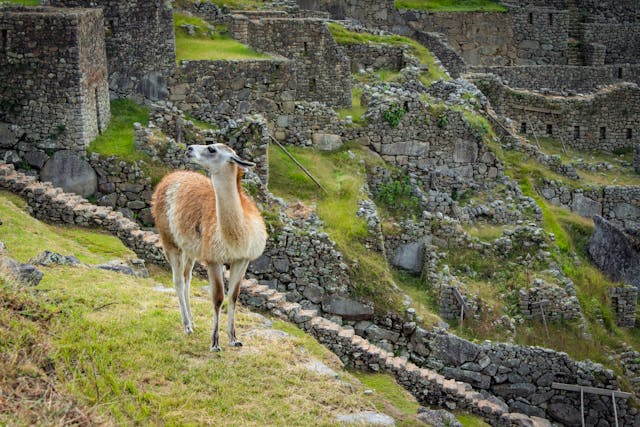
How did the Incas build their roads? The Incas built an extensive road network by using a labor tax, but they used different construction techniques depending on the landscape they were building through.
We have a lot of roads today. It is estimated that there are 200 million km of roads around the word at the moment, although nobody could actually work that out exactly. And, in most parts of the world, roads are relatively simple to build. We have machines that do the digging, the laying of tarmac, the flattening, and the painting. We need people to work the machines, of course, but it is much simpler than it used to be. That is why cultures such as the Romans and the Incas were so incredible. The Inca road system comprised 40,000 km of road. It was not only all built by hand, of course, but it was also built through the jungle and over mountainous terrain. This is all the more incredible because the Inca Empire only lasted for 98 years, with the last Inca settlements hanging on for another 34 years after that.
The Inca Empire was the largest empire in the Americas before the Spanish arrived. It was a remarkable empire because most of it was created through diplomacy, and the Incas were able to create a massive empire without having the wheel, animals that could pull carts, iron and steel, or a system of writing. The Incas entered a settlement that they intended to fold into their empire and started negotiations. If diplomacy failed, they were ready to send in their military. In order to be able to get to these settlements, to send in their military, and to trade and communicate with them once they were folded into the empire, they needed an efficient road system. That is why they constructed such a network of roads.
Some of the roads already existed when the Inca started, and those roads they had to improve. However, they built a lot of new roads. They built two main roads that spanned the length of the empire. These were the coastal road and the highland road. Then they built a lot of smaller roads from these backbone roads. The whole network was called Qhapaq Ñan, which means “royal road”. Many of these roads still exist, in one form or another. The main road that people use to get to Machu Picchu is an old Inca road. The roads stretched as far north as where Ecuador is today and as far south as Santiago in Chile. That is a distance of over 5,000 km. So, how did the Incas manage to build such a road network?
The biggest problem that they, and any ancient civilization had, was labor. These days, we have machines that can carry as much as 20 people. If you don’t have machines, you need 20 people to carry as much as 20 people. A civilization embarking on a big project, such as the Egyptians with the pyramids, has four options. You can use slaves, you can pay people to work, you can get people to work in place of something else, or you can require people to work without paying them, but not as slaves. The Incas used the last two. Slavery was not unheard of in South America, but it was not very common. Paying workers to work on big projects was also not really possible because of how much it would cost. That left the last two options. Some Incas worked on the road networks as a form of tax. They could either pay their tax with money, or with their labor. Most people couldn’t afford money, so they worked on the roads. There was also a system called mita, which was a type of mandatory public service. All able-bodied citizens had to work for the state for a certain amount of time. That meant the state always had access to healthy workers. The Inca Empire had a population of 12 million people, so there was a large pool of available people.
Their construction methods were important as well. The main Inca road traversed steep mountains and they were able to build suspension bridges from natural fibers and tunnels. They also managed to build many kilometers of steps up and down the steep mountains. As the Romans did, they used local materials and they used several layers of sand and larger stones to aid drainage. They built drainage ditches, and they topped the roads with flat stones. Runoff from the mountains is a big problem in the area, so they built rock lined channels to direct the water away from the roads so they wouldn’t get washed away.
The road network was extensive and it allowed the movement of trade and culture. It strengthened the Inca hold over their empire. If it hadn’t been for the arrival of the Spanish, the Inca Empire would probably have become even more powerful. As it was, the road network helped the Spanish immeasurably. They were able to use it to transport their troops and armor long distances very quickly. They also had horses, which were much faster on the roads. It could be said that without the road network, it would have taken the Spanish a lot longer to overthrow the Incas. And this is what I learned today.
Sources
https://en.wikipedia.org/wiki/Inca_road_system
https://www.incatrail.org/information/the-inca-road-system
https://www.quechuasexpeditions.com/the-inca-road-system-paving-the-way-to-an-empire
https://kids.britannica.com/students/article/roads-and-streets/276743
https://en.wikipedia.org/wiki/Inca_Empire
Photo by Joaquín Garduño: https://www.pexels.com/photo/llama-standing-on-a-hill-17030796/
